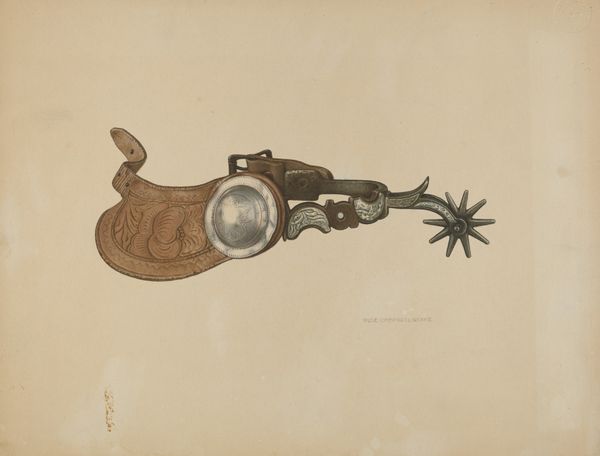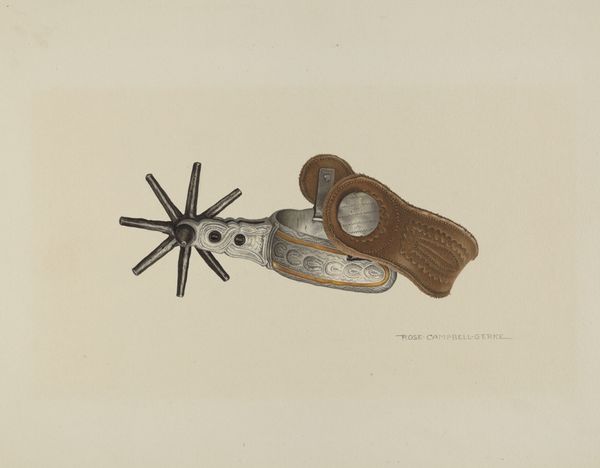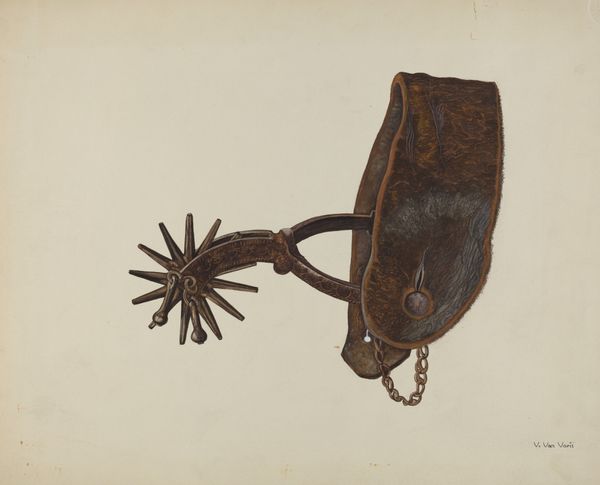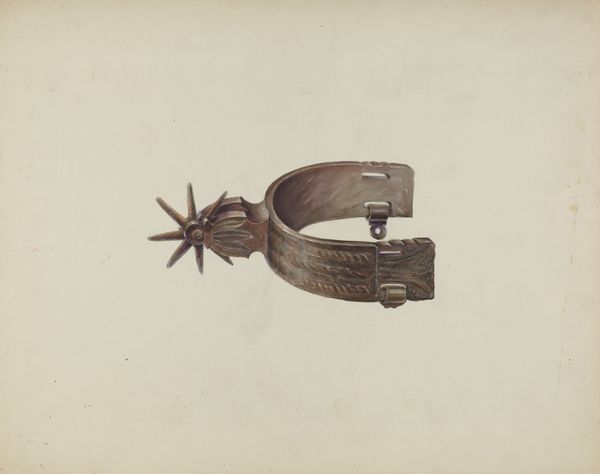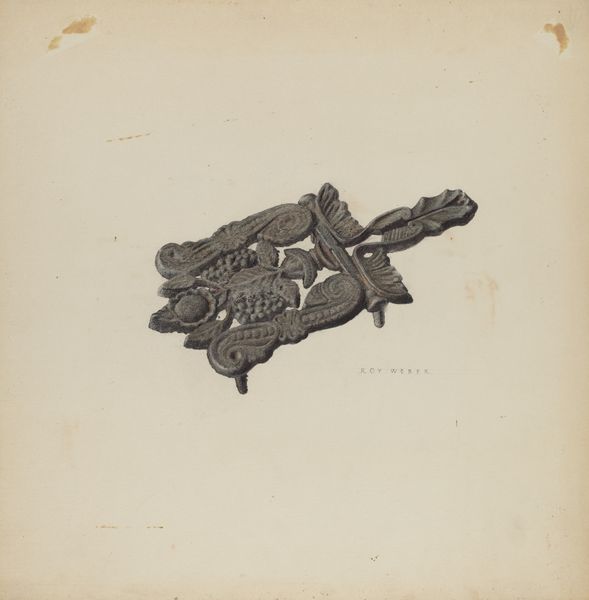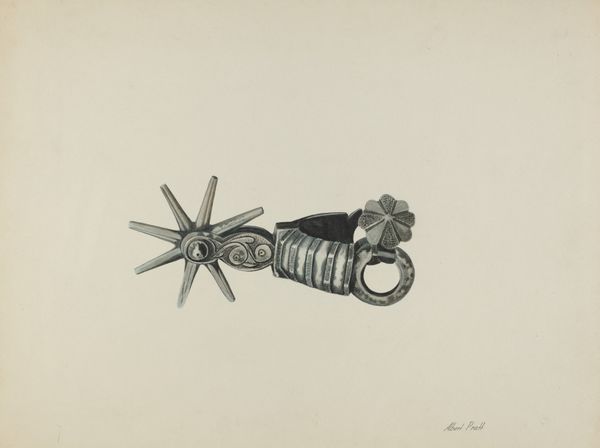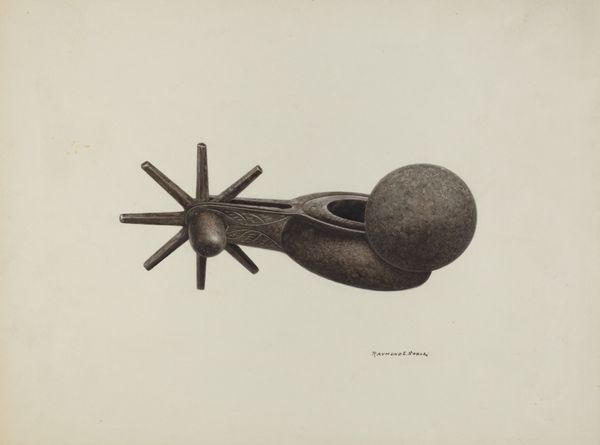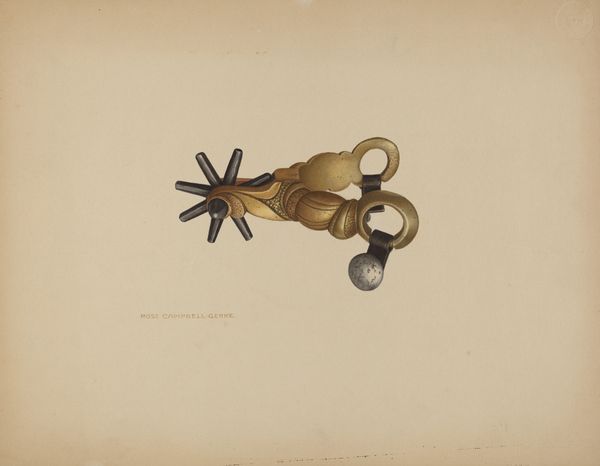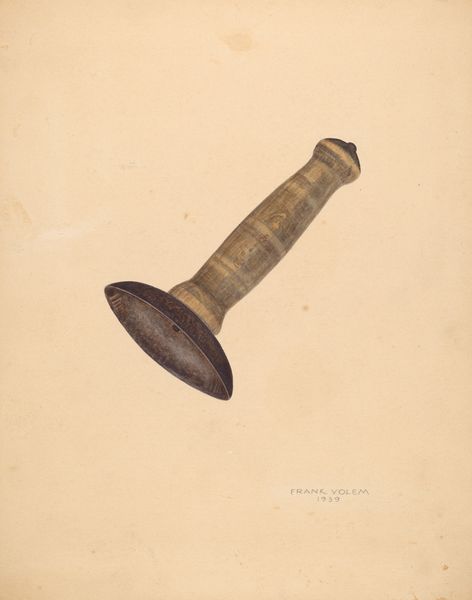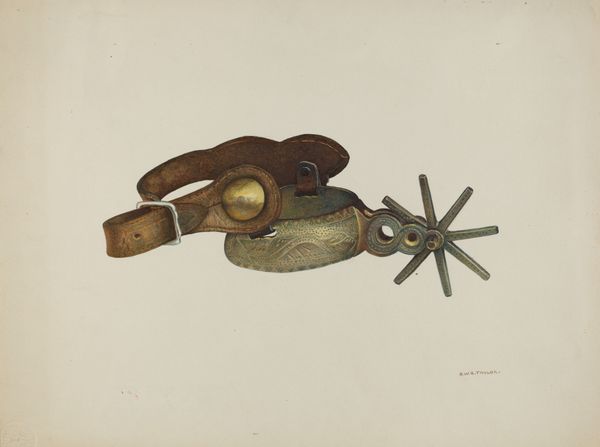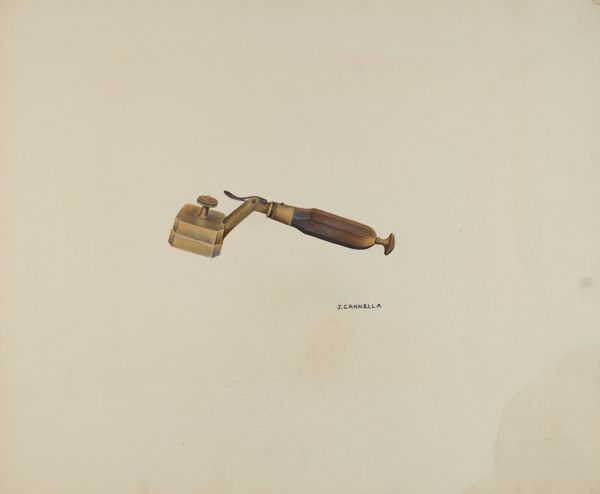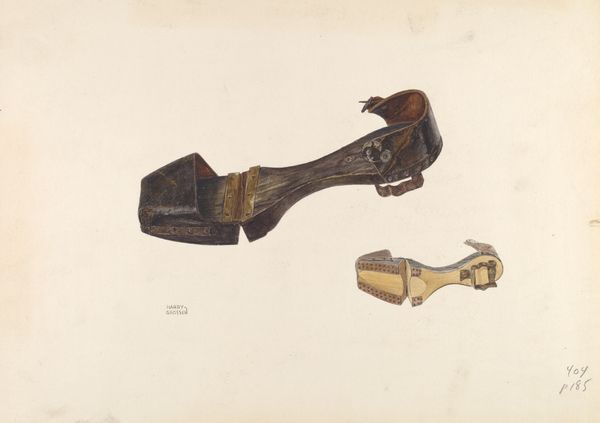
drawing, watercolor
#
drawing
#
watercolor
#
watercolor
Dimensions: overall: 27.9 x 35.4 cm (11 x 13 15/16 in.) Original IAD Object: 6" long; 3" wide
Copyright: National Gallery of Art: CC0 1.0
Curator: I find myself drawn to the intricate details of Rose Campbell-Gerke’s "Inlaid Spur," created around 1937 using watercolor and drawing techniques. It presents such an iconic artifact of the American West. Editor: My initial impression is the contrasting textures! The weathered leather against the gleaming, almost baroque embellishments—there's a fascinating dialogue between austerity and ostentation, rendered in subtle watercolor hues. Curator: Absolutely. This isn't just an image of a spur; it speaks volumes about the history of labor and cultural identity in the American West, particularly concerning the cowboy figure. How these spurs reflect notions of freedom, masculinity, and even violence intertwined with westward expansion is especially thought-provoking. Editor: I am captivated by the artist's rendering of form. Note the complex curves and the way the light reflects differently on the various surfaces, especially along the rowel, made possible by the skillful deployment of wash and fine drawing. This work really illustrates the convergence of form and function through its visual aesthetic. Curator: I agree that it also underscores the intricate class dynamics at play, often elided within popular narratives, that tend to sanitize its brutal histories. The artistry elevates this working tool into something aspirational, a signifier of social standing perhaps, for a population frequently imagined as democratic and working-class. Editor: Yet if we pull back from such social readings, what persists is Campbell-Gerke's refined visual orchestration, the chromatic and tonal variations to convey materiality. One could almost isolate parts of the image—the ornate spur, or leather component—and view them abstractly as studies in form and light. Curator: Considering these historical objects through an intersectional lens enriches our understanding of how objects, particularly those tied to colonial history, can both reflect and perpetuate systemic inequalities. The representation matters just as much as the actual spur. Editor: True. Yet it's Campbell-Gerke's eye, hand, and unique pictorial translation that brings the spur alive. We look past mere document into the realms of thoughtful design. Curator: Contemplating "Inlaid Spur", for me, reinforces that there’s still work to do unpacking these icons in light of contemporary concerns. Editor: Yes. Thinking on it now, the careful control, the gradations within its seeming precision really holds appeal, it moves it out of documentary and places it comfortably into thoughtful artistic expression.
Comments
No comments
Be the first to comment and join the conversation on the ultimate creative platform.
